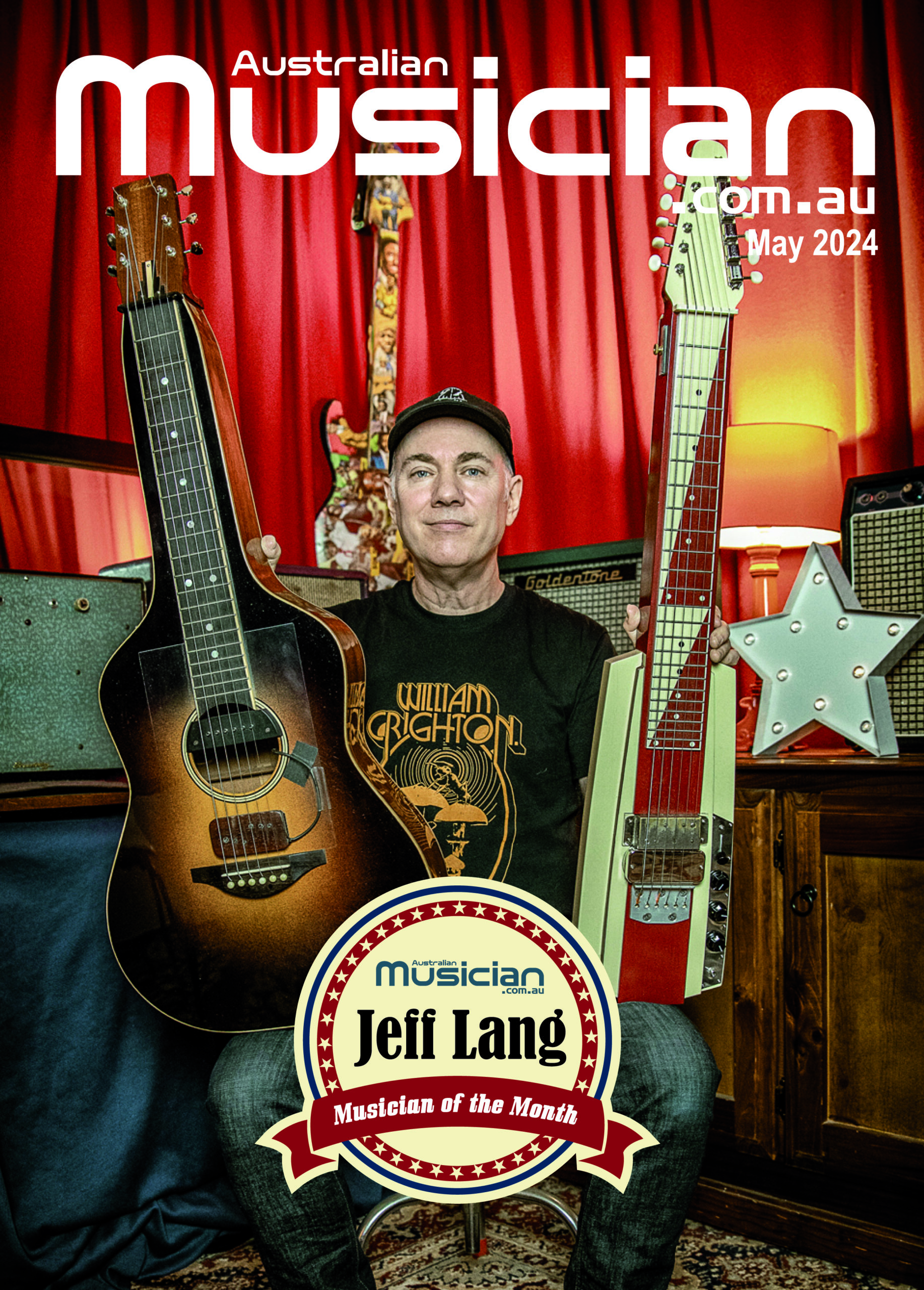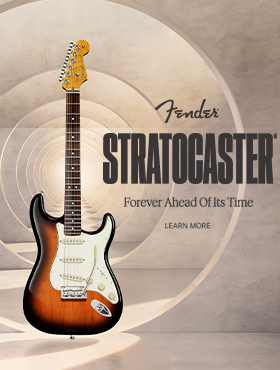
In our last couple of articles on home recording, we’ve mainly focused on the angle that your basic tool requirements are: your instruments, a computer, DAW, interface, microphone, monitors and headphones, plus a controller keyboard or pad if you need one. As Yamaha Music Australia’s Matt Livingstone tells us, under their umbrella of brands, which include, Yamaha Music, Steinberg, Line 6, Ampeg, Vox, Paiste and Earthquaker Devices, they certainly have all of that covered … but more of that later!
What we did want to spotlight is something outside of that generic home recording box which is really the perfect product for these times. Steinberg’s VST Connect is the ideal solution for isolated musicians who want to connect with others anywhere in the world from the comfort of your own home studio. “VST Connect is a remote recording solution that enables musicians to collaborate online in a unique way,” Matt tells me. “Think of it like a Skype recording session, only with full quality audio.”
There are 3 version of VST Connect in the range including: VST Connect Pro, VST Connect Performer, and the entry level VST Connect SE. At the top of the range, VST Connect Pro is a complete remote recording solution that lets you collaborate with any musician with an Internet connection and a computer anywhere on the planet. Data encryption, multi-track recording, live video chat, audio stream protection and MIDI support make geographical distance irrelevant to studio production workflows.
You can invite and manage your contacts directly in the global VST Cloud database using your MySteinberg account, Connect to VST Connect Performer conveniently with just a click, Search and find new collaborators within VST Connect, and Switch between dry and wet signals when recording effect processed audio input. VST Connect Pro allows you to record MIDI and audio data live from a VST instrument loaded into VST Connect Performer anywhere in the world.
NEW OFFER ANNOUNCED! Use Steinberg’s comprehensive production bundle free for 60 days. While confined at home, why not take advantage of our music production, editing, notation and VST instrument software to get creative? To inspire you in these difficult days, we are providing a special license collection of Cubase Elements, Dorico Elements, WaveLab Elements and the Absolute Collection… all free to use for 60 days. https://new.steinberg.net/stayhome
INTERFACES
Returning to the more traditional home recording set up, Matt suggests that Yamaha Music Australia brands can offer anything from a mobile recording rig to a complex studio environment. Beginning with interfaces, he states that the Steinberg USB-C series are incredible value for money units that are versatile and super capable of delivering high quality results.

“We have a number of different USB interface options,” says Matt. “We have a new line of USB-C interfaces and all of those products have effects built into them, so musicians can monitor the material that they are recording but with effects processing happening within the device itself. The advantage of that is that you have greatly reduced latency, so everything sounds good while you’re recording it. Most of the entry level interfaces in this range, given that they are USB-C, can actually be USB powered. We have something like the UR44-C model, which is a reasonably small interface with four mic pres on it, which can be BUS-powered by a laptop for example, if it has the appropriate USB-C connector. So all of a sudden you have a very mobile, portable rig where you can phantom power four microphones just using a laptop.”
Conveniently, there is also a recording pack version of the Steinberg UR22C interface that includes a Steinberg electret condenser microphone and monitoring headphones. “The mic is a great all-rounder for anyone getting into recording, good for vocals and most instruments. The whole pack, which is also great for podcasting, retails for $449.99,” says Matt.
SOFTWARE
 Steinberg offer one of the most popular DAWs (Desktop Audio Workstation) in the world with Cubase. “One of the great things about Cubase is that we have a version for almost every user,” Matt tells me. “Most of our hardware products … and I include Steinberg and Yamaha in that … that can be plugged into a computer include a licence for Cubase AI which is our entry level version of Cubase. That’s going to give you 32 audio tracks to work with, along with loads of effects, sounds and production tools – it is a very capable piece of software.”
Steinberg offer one of the most popular DAWs (Desktop Audio Workstation) in the world with Cubase. “One of the great things about Cubase is that we have a version for almost every user,” Matt tells me. “Most of our hardware products … and I include Steinberg and Yamaha in that … that can be plugged into a computer include a licence for Cubase AI which is our entry level version of Cubase. That’s going to give you 32 audio tracks to work with, along with loads of effects, sounds and production tools – it is a very capable piece of software.”
“Stepping up from Cubase AI we then have Cubase Elements, Cubase Artist, and the fully-featured Cubase Pro. At each step you are getting more and more functionality, more tools, more content and more virtual instruments. We have something for every user – from the version included with our hardware products to the fully spec’d pro version at $849.99 RRP.”

While Yamaha don’t offer a dedicated MIDI Controller, they do present the fabulous Reface mini-keyboard. There are four keyboards in the series, each inspired by a different era of Yamaha synths. “They are designed to be a mobile keyboard, with built-in speakers and the option to run them on batteries, but they have a useful secondary function in that they transmit and receive full MIDI control data” says Matt. “Like wise, most of our range of synthesizers and stage keyboards can also be used as MIDI controllers.”
MONITORS
Yamaha has a strong history of quality studio monitors going back to the acclaimed NS10 series, which sit in many of the best recording studios around the globe and they have kept that legacy going with their newer HS series studio monitors. The HS series are designed to be affordable but have a very honest reference sound to them. They come in three different sizes, with 5”, 6.5” and 8” low frequency drivers, starting at $319.99 per speaker for the HS5 model. Available in black or white, there is also the HS-I installation range with mounting points for brackets.

HEADPHONES
Matt recommends the Yamaha HPH-MT series studio headphones, starting at $199.99 for the MT5 up to $299.99 for the larger MT8. “The obvious benefit of using headphones instead of speakers is portability,” he says. “If you need to work mobile and want a great reference sound, these headphones are ideal, and avoid any issues that would normally come from working in a less than ideal acoustic environment. Alternatively, if you are using a static set up such as a home studio or a project studio, then we recommend going for a good pair of Nearfield studio monitors.”
 … AND THEN THERE’S HELIX
… AND THEN THERE’S HELIX
So Yamaha definitely have you sorted for your DAW, interface, monitors, headphones, plus controller keyboard needs, but Matt also suggests you look at some of the fantastic effects options that are provided by their Line 6 brand.
“Back in 2015, Line 6 introduced Helix, a new multi-effects guitar processor. This is the latest generation of modelling for guitar amps and effects, and the quality of the modelling is first class. The editing capability is also at a very deep level, so you can get in there and select from an enormous range of effects, route them in almost any complex order, and select different combinations of guitar/bass amplifiers and speakers. You can even get right down to which microphone is being used, and adjust the distance of the microphone from the speaker grille,” he says.
There are a number of different products in the Helix family, ranging from the top of the line Helix Floorboard pedal at $2899, right down to the HX Stomp which is a much smaller stomp box style product, but powered by the same DSP and HX Modelling technology, and that retails at $1099. Plus all of this processing power is also available for your computer in the Helix Native plug-in, so you can quite seamlessly move from a live rig to a studio rig and back and forth between them.
With the aforementioned gear readily available in Australia, there are plenty of options to consider. When asked about home recording trends happening out there in the musician community, Matt offered the following observation. “The way technology is moving forward, with the level of quality you can achieve using tools like Cubase, Helix Native and a good pair of studio monitors, we are seeing more and more musicians self-producing fantastic sounding songs with very modest home studio set ups.”
For more information on all of the above, visit https://au.yamaha.com/


